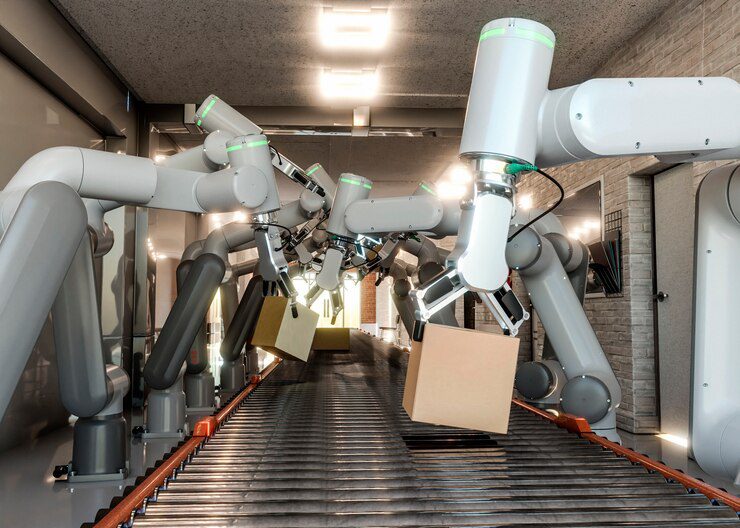In the ever-evolving landscape of modern manufacturing, industrial robotics have emerged as a game-changer. These advanced machines are not only streamlining processes but also setting new standards for efficiency and precision. From automating mundane tasks to tackling complex operations, industrial robotics are revolutionizing the industry. Let’s dive into how these technological marvels are transforming the way we work and what the future holds.
The Rise of Industrial Robotics
The use of industrial robotics in manufacturing is nothing new, but recent advancements have pushed the boundaries of what these machines can achieve. Historically, robots were relegated to repetitive tasks in automotive assembly lines. Today, however, their applications span a wide range of industries, including electronics, pharmaceuticals, and even food production.
Industrial robotics have seen remarkable improvements in terms of versatility, precision, and efficiency. According to a report by the International Federation of Robotics, the global market for industrial robots is projected to reach $46.5 billion by 2025, growing at a CAGR of 11.5% from 2020 to 2025. This growth underscores the increasing reliance on robotics to drive innovation and productivity.
Enhancing Efficiency and Precision
One of the primary benefits of industrial robotics is their ability to enhance efficiency. Robots can operate 24/7 with minimal downtime, which significantly boosts productivity. Their precision is another major advantage; robots can perform tasks with a level of accuracy that far surpasses human capabilities. This is particularly crucial in industries like electronics, where even the slightest deviation can lead to defects.
For instance, in the automotive industry, industrial robotics are used for welding, painting, and assembly processes. These tasks require high precision to ensure that every component fits perfectly, and robots excel in this environment. According to a study by Deloitte, companies that adopted robotics saw a 30% increase in production efficiency and a 15% reduction in manufacturing costs.
Flexibility and Adaptability
Modern industrial robotics are not just about replacing human labor; they are about augmenting human capabilities. Today’s robots are designed to be highly adaptable, capable of switching between different tasks and working alongside humans in collaborative environments. This flexibility is achieved through advanced technologies such as artificial intelligence and machine learning.
Collaborative robots, or cobots, are a prime example of this trend. Unlike traditional robots that operate in isolation, cobots are designed to work safely alongside human workers. They can be easily reprogrammed for different tasks, making them ideal for dynamic production environments. According to a report by the Robotic Industries Association, the use of cobots has grown by 65% annually, reflecting their increasing popularity in diverse manufacturing sectors.
The Role of Artificial Intelligence
Artificial intelligence (AI) is playing a pivotal role in the advancement of industrial robotics. AI algorithms enable robots to learn from their environment, adapt to changes, and optimize their performance. For example, AI-powered vision systems allow robots to identify defects and adjust their actions in real-time, ensuring higher quality control.
In the automotive industry, AI-driven robots are used for complex assembly tasks that require a high degree of flexibility. These robots can adapt to different vehicle models and production requirements, making them indispensable in modern manufacturing. The integration of AI in industrial robotics is expected to drive a 20% increase in automation process efficiency by 2025, according to a report by McKinsey & Company.
Challenges and the Road Ahead
Despite the many benefits, the integration of industrial robotics is not without its challenges. High initial costs, technical complexity, and the need for skilled personnel can be barriers for some companies. However, the long-term benefits often outweigh these challenges, as robots can lead to significant cost savings and productivity gains.
Looking ahead, the future of industrial robotics is promising. Continued advancements in AI, machine learning, and robotics technology will further enhance their capabilities and applications. Companies that embrace these technologies will likely find themselves at the forefront of innovation, driving growth and efficiency in the manufacturing sector.
Conclusion
The advancement of industrial robotics is reshaping the manufacturing landscape, offering unprecedented levels of efficiency, precision, and flexibility. As technology continues to evolve, the role of robots in industry will only become more integral. By leveraging the power of robotics, businesses can streamline their operations, reduce costs, and stay competitive in an increasingly demanding market. Embracing this technological revolution is not just an option; it’s a necessity for future success.
Whether you’re a manufacturer looking to innovate or a tech enthusiast fascinated by the latest trends, it’s clear that industrial robotics are paving the way for a smarter, more efficient future.







